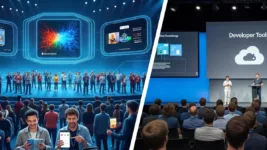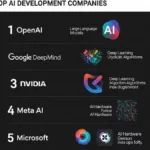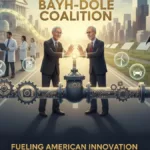Here in Bend, Oregon, where the digital frontier meets the rugged individualism of the West, the annual tech showcases from the giants often provide a roadmap for the future. This year, Google I/O 2025 and Microsoft Build 2025 offered their respective glimpses into the AI-powered world to come. While both keynotes leaned into the promise of artificial intelligence heavily, the approaches, the emphasis and ultimately the resonance with the audience painted a distinctly different picture. Drawing parallels to the perceived missteps of Microsoft Build that we discussed previously, let’s delve into which tech titan appeared to have its finger more firmly on the pulse of the AI revolution.
AI on Stage: A Matter of Show, Don’t Just Tell
Comparing the two keynotes, Google I/O 2025 undeniably showcased a more pervasive and tangible integration of AI into its present and near-future offerings. The sheer volume of AI-powered features and products unveiled by Google was striking. From the enhanced reasoning of Gemini (“Deep Think”) and its efficiency boost (“Gemini 2.5 Flash“) to the AI-driven enhancements across core services like Search (“AI Mode“) and Gmail (with its increasingly prescient “Smart Replies” and “Inbox Cleanup”), Google made it clear that AI is not just a future aspiration but a current reality woven into the fabric of its ecosystem. The introduction of entirely new AI-centric tools like Veo 3 for AI video generation (complete with audio, no less!), Imagen 4 for image generation that borders on photorealism, and Flow for AI filmmaking demonstrated a commitment to democratizing powerful creative tools. Even the ambitious “Project Astra,” a universal AI assistant aiming for true contextual understanding, and “Project Mariner,” an agentic AI promising web-browsing and task automation, felt like concrete steps towards a future brimming with intelligent assistance. Furthermore, the very presentation style of Google I/O often felt infused with AI, with seamless transitions, dynamic visuals and a flow that suggested an intelligent hand behind the curtain.
Microsoft Build 2025, however, while also heavily focused on AI, particularly the burgeoning concept of “AI agents,” presented a more developer-centric vision. The emphasis on tools and platforms like Copilot Studio and Windows AI Foundry, while crucial for building the next generation of intelligent applications, lacked the immediate, end-user impact that permeated Google’s presentation. The focus on infrastructure and the means for developers to create AI agents, while forward-looking, didn’t showcase the readily available AI advancements in Microsoft’s own products with the same tangible enthusiasm as Google’s product-driven approach. The presentation itself, in contrast to Google’s slick, AI-infused delivery, often felt like a more traditional PowerPoint presentation, relying on static slides rather than dynamic, AI-generated content. It echoed the sentiment from our previous discussion: a lot of talk about the AI engine, but not enough showcasing of the cars it’s already powering.
Gazing into the Crystal Ball: Vision and Forward-Thinking
When it came to painting a picture of the future, Google’s I/O 2025 arguably offered a more immediately compelling and, dare I say, visionary outlook. Its exploration of “world models” with Gemini, aiming to create AI with a more human-like understanding of and interaction with the real world, felt like a significant leap toward more intuitive and capable AI. The unveiling of “Google Beam,” a 3D video conferencing platform hinting at a more immersive and perhaps less socially awkward future of remote communication done in partnership with HP, and the advancements in Android XR, envisioning smart glasses with integrated AI capabilities, provided tangible glimpses into near-future technologies that could reshape how we interact with the digital and physical realms.
While Microsoft’s emphasis on the “open agentic web” – a potentially transformative concept centered on interconnected AI agents – certainly held long-term promise, its immediate impact felt less pronounced. The focus on developer tools, while laying the groundwork for future innovation, didn’t quite capture the imagination in the same way as Google’s showcased AI applications poised for near-term integration into everyday life. Microsoft’s vision, while perhaps more foundational for the enterprise space, lacked the broad, consumer-centric appeal that made Google’s presentation feel more immediately forward-looking.
The Tone Test: Reading the Room (and the Internet) in the Age of AI Anxiety
In terms of “tone-deafness,” Google’s I/O 2025 appeared to navigate the complexities of the AI revolution with relative aplomb. The focus on tangible advancements, coupled with the democratization of powerful AI tools, seemed to align with industry trends and a general consumer curiosity and cautious optimism surrounding AI’s potential.
Microsoft Build 2025, however, faced a potentially significant “tone check” moment, amplifying the undercurrent of job security anxieties we discussed previously. The reported disruption of Satya Nadella’s keynote by a Microsoft employee protesting the company’s cloud and AI contracts with the Israeli government highlighted a potential disconnect between the company’s public messaging and the concerns of at least some within its own ranks. But the tonal missteps didn’t end there. Microsoft’s decision to feature Sam Altman, CEO of OpenAI, a company with its own share of ethical and leadership controversies, and Elon Musk, a figure whose relationship with the tech community and governments is increasingly fraught, on stage, while ostensibly promoting open source, felt jarring and out of touch. This contrasted sharply with Google’s keynote, which did not feature such polarizing figures. Microsoft’s featuring individuals whose companies and personas are often seen as antithetical to the collaborative and ethical ideals of open source created a significant credibility gap. It was a stark reminder of the “unholy trinity” discussed earlier, a baffling choice given the anxieties surrounding AI’s impact on employment and the need for responsible innovation. The absence of such potentially alienating figures on Google’s stage further highlighted Microsoft’s misreading of the room. Moreover, while Google’s presentation felt dynamically AI-driven, Microsoft’s reliance on a more traditional format underscored a potential irony: a tech giant pitching the future of AI with a presentation style that felt decidedly…pre-AI.
Wrapping Up: A Fork in the Road for the AI Narrative
In the battle for the AI horizon, Google I/O 2025 and Microsoft Build 2025 presented contrasting visions. Google appeared to lead with tangible, user-facing AI advancements and a more immediate glimpse into an AI-integrated future, delivered with a presentation style that hinted at the very technology being showcased. And the fact that Google used smartphones for many of the presentations rather than PCs looked more convenient and advanced.
Microsoft, while heavily invested in AI, focused more on the underlying tools and infrastructure for developers, with a potentially less immediately impactful vision for end-users, and a keynote that felt tonally disconnected from the anxieties of its audience and undermined by its choice of controversial guest speakers. As the AI revolution unfolds, the ability to not only innovate but also to connect with and address the real-world concerns of developers and the broader public with a consistent and authentic message will be crucial for long-term success and trust.
Watching both events reminded me of Microsoft and IBM in the early 90s when Microsoft was on the cutting edge and IBM seemed way out of touch. But Microsoft now appears more like IBM, stuck in the past and hampered by its platforms, while Google appears more like the old Microsoft, more forward looking and with a deeper understanding of the pivotal technology. Then it was PCs. Now it’s AI, and this doesn’t bode well for Microsoft. The two companies feel like they are in different centuries, Microsoft living in the 1900s while Google has advanced into the future of AI.








